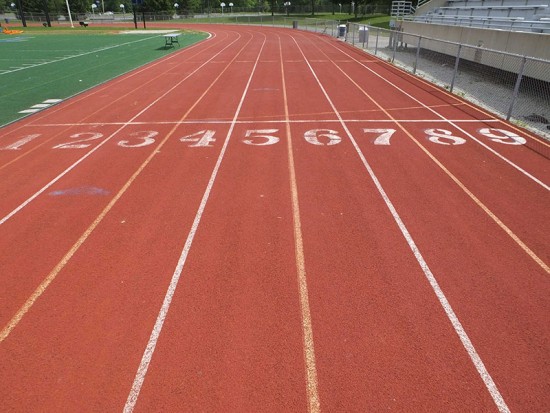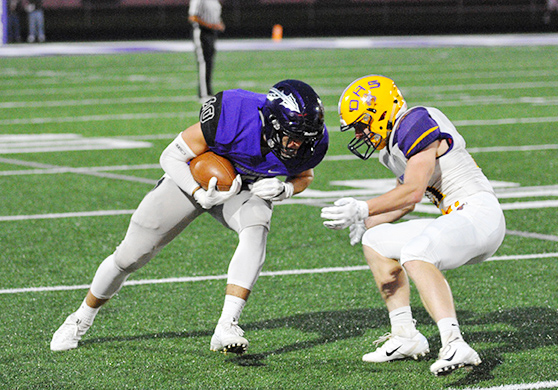Relieving shin splints in athletes
If you spend enough time around athletes, you’ll most likely observe at least one of them putting ice on their shins after practice. Ask why, and the most common answer is, “I have shin splints.”
Although it may be a common problem, shin splints is often a poorly understood condition that leaves athletes and their coaches scratching their heads as to how best to treat it.
What are shin splints?
 The condition of shin splints is characterized by pain along the front and inner edge of the lower leg bone, called the tibia. The pain arises from the site of muscle attachments to the tibia, where stress is concentrated during activity. Shin-splint pain can be severe enough to affect performance or even keep athletes from participating in practices or events.
The condition of shin splints is characterized by pain along the front and inner edge of the lower leg bone, called the tibia. The pain arises from the site of muscle attachments to the tibia, where stress is concentrated during activity. Shin-splint pain can be severe enough to affect performance or even keep athletes from participating in practices or events.
Shin pain can be a regular complaint among athletes who participate in sports that require prolonged or intense running. When pain persists after the athlete has stopped running, or gets worse over multiple practice periods, shin splints may be the cause. If this pain is ignored, and athletic activity continues, there is risk for development of a stress fracture. A stress fracture can force even the toughest athlete to sit out or even cost that player an entire season.
Although the exact cause of shin splints is not fully understood, its onset has been related to abnormal foot mechanics, rapid increase in running intensity or volume, and the type of running surface. Foot alignment and footwear also are considerations.
Injury susceptibility is associated with two distinctly different types of abnormal foot mechanics: An athlete with high, rigid arches that do not move enough when running (supinators); or an athlete with arches that move too much (pronators). Either of these conditions can lead to excessive mechanical stress on body tissues.
The mechanics of the foot can be corrected with the use of an arch support (orthotics). Studies of military recruits suffering from shin splints have demonstrated that arch supports decreased pain. An arch support maintains the foot in a relatively neutral position, which reduces stress.
As a coach, consult with an athletic trainer or physician to determine whether an athlete’s mechanics present a need for arch support. Off-the-shelf arch supports may be beneficial, but custom-arch supports provide a greater level of support and last longer.
Avoiding/treating shin splints
When an athlete attempts to increase running distance or speed too rapidly, the bone and muscle tissues are subjected to more stress than they can effectively dissipate. This leads to muscle fatigue, which decreases the capacity to absorb forces.
Excessive stress is transferred to the muscle attachment and to the bone, leading to shin splints. This may be avoided through proper training and gradual progression. Make sure your athletes understand the importance of gradually increasing tissue tolerance for greater distance or speed to help them avoid shin splints.

An athlete who has already developed shin splints from aggressive training should reduce the activity level for five to seven days and maintain training at a pain-free level. During this period, have the athlete do alternative activities to maintain conditioning, so long as these activities do not cause further pain. Examples of alternative activities include swimming, biking, elliptical machines and stair climbers.
Both the hardness and slope of the running surface can affect the lower-leg musculature. The harder the surface, the greater the amount of stress the muscles and bones of the lower leg have to absorb. Concrete and asphalt are examples of high-stress surfaces. Athletes who are unaccustomed to running on a hard surface should alternate workouts to include other surfaces, such as a grass, wood or rubberized material.
If your athletes are running on a slope, either uphill or downhill, the muscles of the leg must work in a position that imposes stress for a longer period of time. To help prevent this, limit your training on sloped surfaces, introduce slopes gradually and alternate slopes with your athletes training on level surfaces.
Shin-splint pain can be treated with ice packs applied to affected area for 20 minutes, stretching of the lower-leg musculature and use of over-the-counter analgesics. However, such treatments only provide temporary relief and do not address the cause of shin splints.
Shin splints vs. stress fracture
Another concern for athletes suffering from lower-leg pain is the differentiation of shin splints from a stress fracture in the lower leg. Shin splints lead to a decrease in athletic performance if not treated. A stress fracture is a serious injury that can lead to a complete fracture of the lower-leg bone.
Although there is not a direct relationship between shin splints and stress fractures, both can be caused by repetitive stresses on the lower leg. This makes being able to tell the difference between the two conditions critically important.
An athlete suffering from shin splints typically has pain in both legs over a broad area of the shin. Stress fractures, on the other hand, are painful at a very specific point, and usually affect only one leg. An athlete who is suspected of having a stress fracture should be referred for medical evaluation (e.g. x-ray, bone scan, MRI).
As with other injuries and conditions, the best offense is a good defense. Prevention is the key. Understanding the cause and appropriate interventions is an effective strategy for avoiding shin splints, or at least minimizing the signs and symptoms associated with this condition, thereby allowing your athletes to have a productive and pain-free season.
Gary Wilkerson, EdD, ATC; Marisa Colston, PhD, ATC; and Todd Bullard, MS, ATC, work at the Department of Health & Human Performance at the University of Tennessee at Chattanooga.





